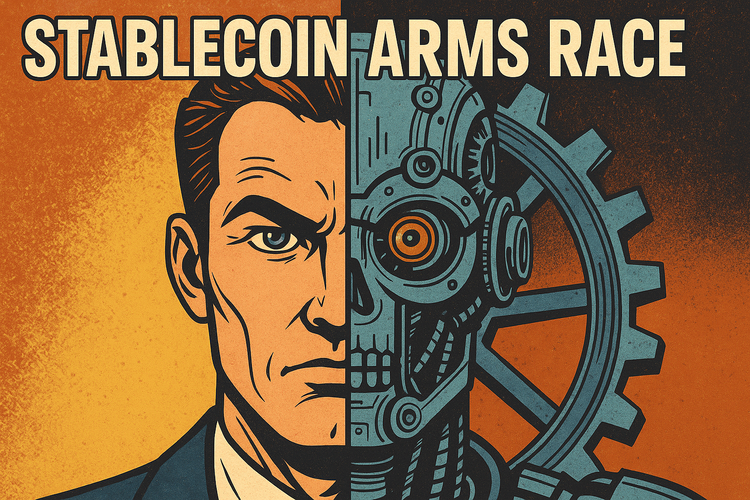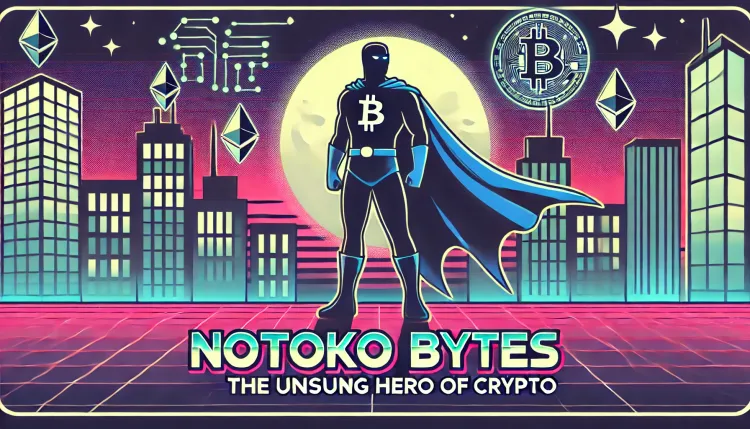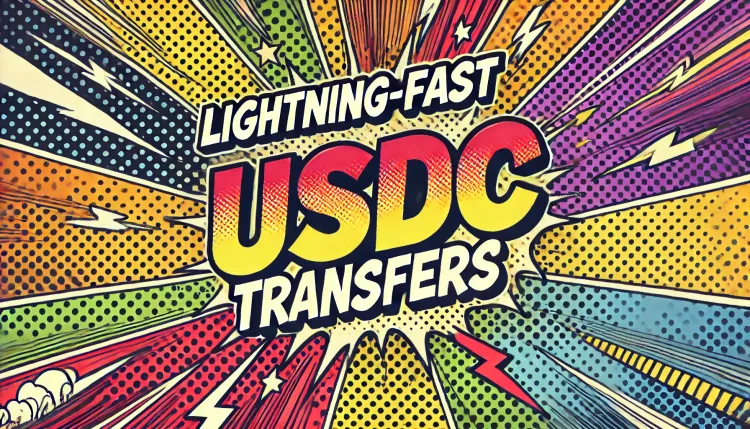Stablecoins Explained: The Ultimate Guide to Understanding, Choosing, and Using Stablecoins in the Cryptocurrency Market

In recent years, the cryptocurrency market has experienced significant growth and diversification, with stablecoins emerging as an essential and rapidly expanding segment. As an innovative solution to the price volatility associated with cryptocurrencies like Bitcoin and Ethereum, stablecoins have garnered substantial interest from investors, traders, and businesses alike.
The meteoric rise of stablecoins like Tether (USDT), USD Coin (USDC), and Binance USD (BUSD) demonstrates the growing demand for stable digital assets that combine the benefits of blockchain technology with the stability of traditional fiat currencies. According to a Cambridge Centre for Alternative Finance study, the stablecoin market cap experienced a six-fold increase in 2025. With the continued expansion of decentralized finance (DeFi) applications, the importance of stablecoins in facilitating trading, remittance, and digital payments is only set to increase.
Understanding the Different Types of Stablecoins
As the stablecoin market continues to evolve, a diverse array of stablecoin models has emerged, each with its own unique mechanisms for maintaining price stability. In this section, we'll explore the most popular types of stablecoins, their underlying principles, and the key differences that set them apart.
A. Fiat-collateralized stablecoins:
Fiat-collateralized stablecoins are backed by traditional fiat currencies like the US Dollar, Euro, or British Pound, held in reserve by a trusted custodian or bank. Each stablecoin token is issued with a 1:1 peg to its corresponding fiat currency, ensuring its value remains stable. Tether (USDT), USD Coin (USDC), and Binance USD (BUSD) are prominent examples of fiat-collateralized stablecoins.
B. Crypto-collateralized stablecoins:
Crypto-collateralized stablecoins maintain their price stability by being backed with other cryptocurrencies, typically over-collateralized to account for price fluctuations. These stablecoins are often decentralized and governed by smart contracts, which manage the collateralization process. MakerDAO's DAI and Synthetix's sUSD are well-known examples of crypto-collateralized stablecoins.
C. Algorithmic stablecoins:
Algorithmic stablecoins use complex algorithms and smart contracts to regulate their supply and demand, adjusting the coin's circulating supply to maintain a stable value. These stablecoins are not backed by any collateral, making them fully decentralized. Examples of algorithmic stablecoins include Ampleforth (AMPL), and Basis Cash (BAC)
D. Commodity-collateralized stablecoins:
Commodity-collateralized stablecoins are backed by physical assets like gold, silver, or other commodities, providing a stable value tied to the underlying asset's market price. These stablecoins offer a unique way to gain exposure to commodities while benefiting from the security and transparency of blockchain technology. Examples of commodity-collateralized stablecoins are Tether Gold (XAUT) and Paxos Gold (PAXG).
Key Use Cases for Stablecoins in the Cryptocurrency Market
As the popularity and utility of stablecoins continue to grow, they are increasingly being adopted for a variety of use cases within the cryptocurrency market. In this section, we'll explore some of the most common applications of stablecoins, illustrating their versatility and wide-ranging appeal.
A. Trading and arbitrage:
Stablecoins have become an indispensable tool for traders and investors seeking to capitalize on price differences between cryptocurrency exchanges, known as arbitrage opportunities. By providing a stable medium of exchange, stablecoins like Tether (USDT) and USD Coin (USDC) facilitate efficient and low-risk trading, minimizing exposure to the inherent volatility of cryptocurrencies.
B. Decentralized finance (DeFi) applications:
Decentralized finance (DeFi) platforms have increasingly integrated stablecoins as a core component of their offerings, including lending, borrowing, yield farming, and liquidity provision. Stablecoins enable users to earn interest, access credit, and participate in various DeFi protocols with reduced risk and enhanced stability compared to volatile cryptocurrencies.
C. Remittance and cross-border transactions:
Stablecoins offer a cost-effective and efficient solution for remittance and cross-border transactions, enabling users to send funds across borders with minimal fees and near-instant transaction times. By circumventing traditional banking systems and intermediaries, stablecoins like Circle's USDC and the Stellar-based stablecoin, Stronghold USD (SHx), provide a streamlined and accessible solution for international money transfers.
D. Store of value and digital payments:
As a digital alternative to fiat currencies, stablecoins offer a stable store of value and a convenient medium for digital payments. By maintaining a 1:1 peg to their corresponding fiat currency, stablecoins like Binance USD (BUSD) and Gemini Dollar (GUSD) provide users with a reliable and secure method of storing and transacting value in the digital realm.
The Advantages of Stablecoins in the Cryptocurrency Ecosystem
Stablecoins are digital currencies designed to minimize price volatility and are backed by reserve assets. Here are their main advantages:
- Price Stability: Offers protection against the volatility of other cryptocurrencies.
- Transparency and Security: Utilizes blockchain technology for secure and transparent transactions.
- Scalability and Interoperability: Can interact with various blockchain networks, facilitating seamless transactions across platforms.
- Regulatory Compliance: Gaining credibility as issuers prioritize compliance with financial regulations, encouraging broader adoption by traditional financial institutions.
Challenges and Risks Associated with Stablecoins
While stablecoins offer numerous advantages, they also face significant challenges, including:
- Collateralization Concerns: Maintaining proper collateral levels can be difficult, posing risks to users, especially when the underlying assets' value fluctuates.
- Centralization Risks: Fiat-collateralized stablecoins often rely on centralized entities to manage reserves and issuance, which can create potential points of failure.
- Regulatory Scrutiny: As stablecoins gain prominence, they face increased attention from regulators concerned about financial stability, consumer protection, and compliance with anti-money laundering and know-your-customer regulations.
- Market Competition and Saturation: The rapid increase of stablecoins has led to a crowded market, with many projects competing for market share, potentially impacting the long-term viability of certain stablecoins.
The Future Outlook for Stablecoins in the Cryptocurrency Market
As stablecoins continue to make their mark in the cryptocurrency landscape, it's essential to consider the future outlook and potential developments in this rapidly evolving market segment. In this section, we'll explore some of the trends and innovations that could shape the stablecoin market in the coming years, offering valuable insights for users and investors alike.
A. Central bank digital currencies (CBDCs)
The rise of stablecoins has sparked interest in central bank digital currencies (CBDCs), which are digital versions of national fiat currencies issued and regulated by central banks. As CBDCs become more prevalent, they could create both opportunities and challenges for existing stablecoins, potentially reshaping the market dynamics and regulatory environment.
B. Enhanced regulatory frameworks
As stablecoins attract more attention from regulators and policymakers, we can expect the development of more comprehensive and harmonized regulatory frameworks for stablecoins. These new regulations could provide clearer guidelines for stablecoin issuers and users, fostering increased trust and driving broader adoption of stablecoins in the global financial system.
C. Integration with traditional finance
As stablecoins gain credibility and acceptance, they are likely to see increased integration with traditional financial institutions and services. This integration could involve partnerships between stablecoin issuers and banks, the development of new financial products incorporating stablecoins, and greater participation of institutional investors in the stablecoin market.
D. Technological advancements and innovation
The stablecoin market is likely to benefit from ongoing technological advancements and innovation, with new stablecoin models and solutions emerging to address existing challenges and capitalize on emerging opportunities. These innovations could include improved mechanisms for maintaining price stability, enhanced security features, and increased scalability and interoperability with other digital assets and platforms.
How to Choose the Right Stablecoin for Your Needs
With a growing number of stablecoin options available in the cryptocurrency market, selecting the right stablecoin for your needs can be a daunting task. In this section, we will discuss some key factors to consider when choosing a stablecoin, ensuring that you make an informed decision that aligns with your requirements and risk tolerance.
A. Type of stablecoin
As discussed earlier, there are various types of stablecoins, each with its own mechanisms for maintaining price stability. Depending on your preferences and risk appetite, you may opt for a fiat-collateralized stablecoin for increased stability, a crypto-collateralized stablecoin for decentralization, or an algorithmic stablecoin for a fully decentralized option.
B. Liquidity and trading pairs
It is essential to choose a stablecoin with sufficient liquidity and trading pairs on major cryptocurrency exchanges. High liquidity ensures that you can easily buy and sell the stablecoin without impacting its price, while a wide range of trading pairs allows for seamless conversion between different cryptocurrencies.
C. Regulatory compliance and transparency
Opt for stablecoins that prioritize regulatory compliance and transparency in their operations. Compliant stablecoins, such as USD Coin (USDC) and Gemini Dollar (GUSD), are more likely to maintain their pegs and avoid potential legal issues, providing users with increased confidence in their stability and legitimacy.
D. Adoption and market reputation
Assess the overall adoption and market reputation of the stablecoin. Established stablecoins with a proven track record, such as Tether (USDT) and Paxos Standard (PAX), are more likely to provide consistent performance and maintain their pegs, ensuring a reliable and stable user experience.
Conclusion: The Growing Importance of Stablecoins in the Cryptocurrency Space
In conclusion, stablecoins have emerged as a vital component of the cryptocurrency ecosystem, offering a stable and reliable alternative to more volatile digital assets. By combining the benefits of blockchain technology with the stability of traditional fiat currencies, stablecoins address various challenges associated with digital assets, enabling a wider range of use cases, from trading and arbitrage to DeFi applications and cross-border transactions.
Stablecoins are poised to play an increasingly important role in the digital asset market and the broader financial system, bridging the gap between decentralized cryptocurrencies and traditional finance and offering users a versatile, stable, and secure solution for managing their digital assets.
Disclaimer
*The information and analysis provided in this article are intended for educational and informational purposes only and should not be considered as financial, investment, or professional advice. While our team strives to ensure the accuracy and reliability of the content, we make no representations or warranties of any kind, express or implied, about the completeness, accuracy, reliability, suitability, or availability of the information presented.
The content within this article may include opinions and forward-looking statements that involve risks and uncertainties. The blockchain and cryptocurrency markets are highly volatile, and past performance is not indicative of future results. Any reliance you place on the information presented is strictly at your own risk. Before making any investment decisions, we highly recommend consulting with a qualified financial advisor or conducting your own thorough research.
By accessing and using the information provided in this article, you acknowledge and agree that neither the authors, publishers, nor any other party involved in the creation or delivery of the content shall be held liable for any direct, indirect, incidental, consequential, or punitive damages, including but not limited to loss of profits, goodwill, or data, arising out of your use or inability to use the information provided or any actions you take based on the information contained within this section.*





